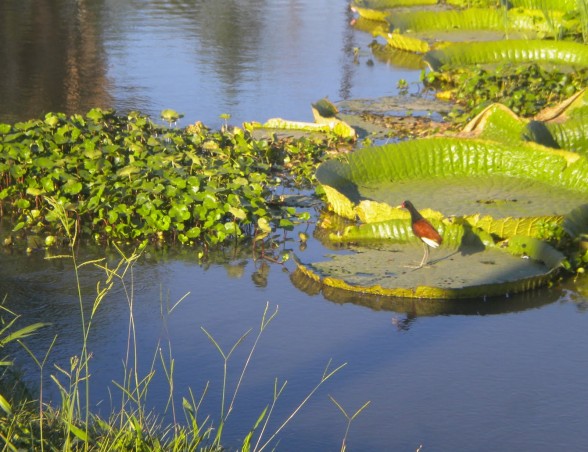Irupé (Victoria cruciana) is the Guaraní word for Victoria water lily. It grows in the rivers of Paraguay and the Argentinean Mesopotamia area. Its leaves can measure up to two metres (about six feet) in diameter and support the weight of birds and small mammals. Its flowers are white at first and then turn to red.
 Photo credit: verdechaco
Photo credit: verdechaco
There are different folk tales about the origins of the irupé. Here’s a version from the Diccionario de Mitos y Leyendas (Dictionary of Myths and Legends – the translation is mine.)
Once upon a time, a beautiful maiden became infatuated with the Moon. Every night, she forlornly looked up to the black skies to see her shining beloved. She suffered in silence her unrequited love.
One day, in a fit of passion, the girl decided to reach for her celestial lover and climbed the tallest tree. She stretched out her arms to the heavens in vain. Then, overcoming exhaustion, she climbed a mountain and waited for her beloved at the windy top, but to no avail.
The beautiful maiden sighed her way down to the valley and then walked towards the horizon. In this quest for the impossible, she stumbled upon hard stones and her feet bled.
One night, she saw her reflection on quiet waters and it was close to that of the Moon. She believed she could touch him with her hands. Without hesitation, she jumped on the deep waters and drowned.
The god Tupá took pity on the maiden and transformed her into an irupé, whose leaves resembled the lunar disk and look up to the skies in a constant search for her lover.
Read more




